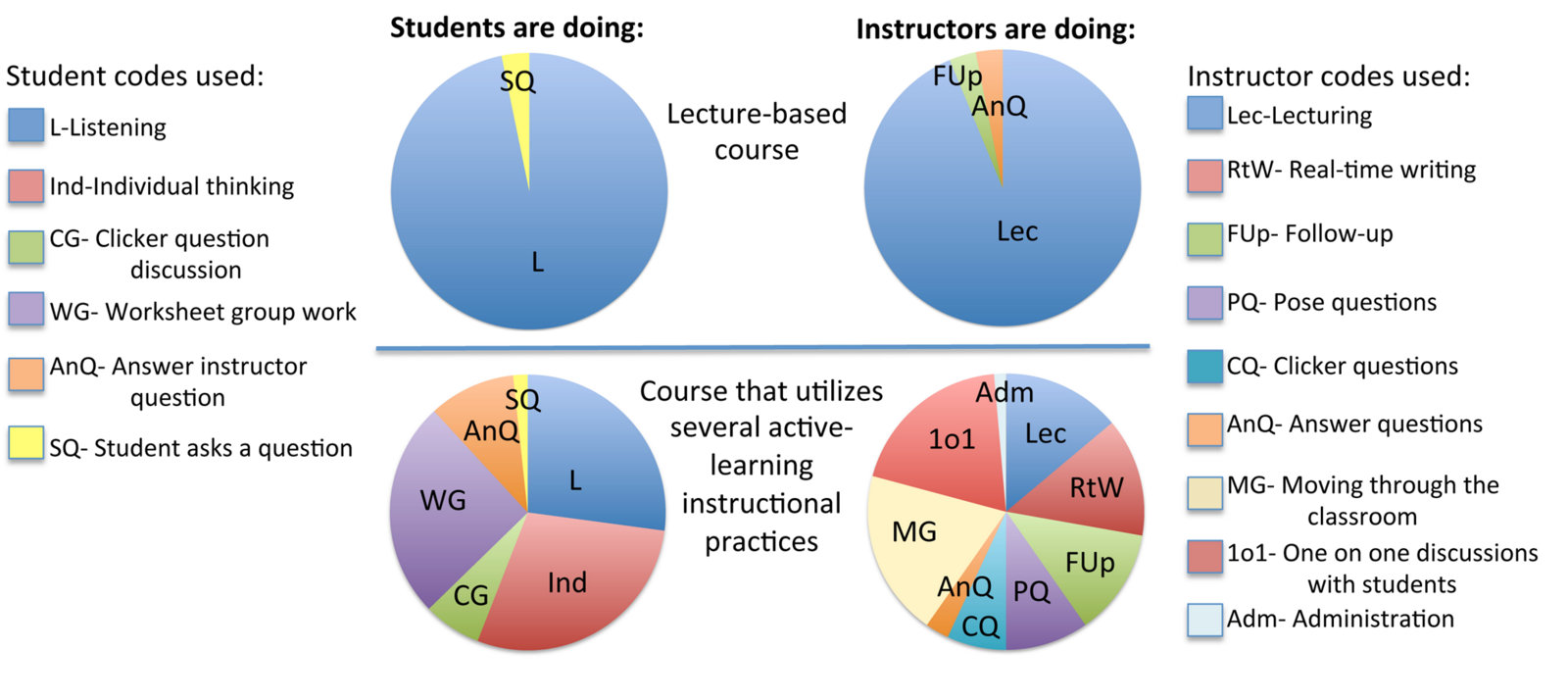- CWSEI Home /
- Resources /
- Tools /
- Classroom Observation Protocol for Undergraduate STEM (COPUS)
Classroom Observation Protocol for Undergraduate STEM (COPUS)
Instructors, and the teaching practices they employ, play a critical role in improving student learning in college Science, Technology, Engineering, and Mathematics (STEM) courses. Consequently, there is increasing interest in collecting information on the range and frequency of teaching practices at department-wide and institution-wide scales. To help facilitate this process, we developed a classroom observation protocol known as the Classroom Observation Protocol for Undergraduate STEM or COPUS. This protocol was adapted from the Teaching Dimensions Observation Protocol (TDOP) (M.T. Hora, A. Oleson, J.J. Ferrare, Wisconsin Center for Education Research, University of Wisconsin–Madison). The COPUS allows observers, after a short 1.5 hour training period, to reliably characterize how faculty and students are spending their time in the classroom.
Development article: The Classroom Observation Protocol for Undergraduate STEM (COPUS): a New Instrument to Characterize University STEM Classroom Practices Michelle Smith, Francis Jones, Sarah Gilbert, and Carl Wieman, CBE-Life Sciences Education, Vol 12(4), pp. 618-627 (2013). https://doi.org/10.1187/cbe.13-08-0154
Paper version: COPUS observation protocol
Digital (spreadsheet) version: COPUS Excel file for recording observations and tallying results (xlsx format)
Training: COPUS training guide developed by CWSEI and further detailed descriptions of codes developed as part of the TRansforming Education, Stimulating Teaching and Learning Excellence (TRESTLE) network hosted by the University of Kansas and involving both of the SEI universities.
Set of introductory slides about COPUS developed by the TRESTLE network.
COPUS Visualization Excel file (xlsx format) developed by the Teaching Engagement Program at the University of Oregon.
Sample COPUS Report for Instructors (docx format) developed by the TRESTLE network.
Video (YouTube) of COPUS codes in action created by the TRESTLE network.
A comparison of COPUS results from two courses that have different instructional approaches:
